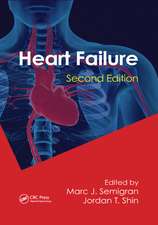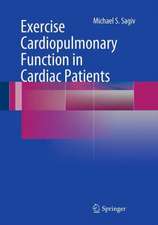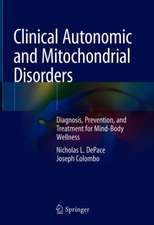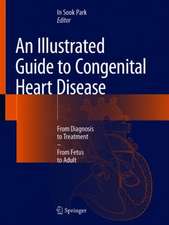The Heart and Circulation: An Integrative Model
Autor Branko Fursten Limba Engleză Hardback – 22 aug 2013
| Toate formatele și edițiile | Preț | Express |
|---|---|---|
| Paperback (1) | 735.04 lei 38-44 zile | |
| Springer International Publishing – 24 dec 2020 | 735.04 lei 38-44 zile | |
| Hardback (2) | 996.57 lei 38-44 zile | |
| Springer International Publishing – 9 dec 2019 | 996.57 lei 38-44 zile | |
| SPRINGER LONDON – 22 aug 2013 | 1102.31 lei 6-8 săpt. |
Preț: 1102.31 lei
Preț vechi: 1160.32 lei
-5% Nou
Puncte Express: 1653
Preț estimativ în valută:
210.92€ • 220.24$ • 174.17£
210.92€ • 220.24$ • 174.17£
Carte tipărită la comandă
Livrare economică 15-29 aprilie
Preluare comenzi: 021 569.72.76
Specificații
ISBN-13: 9781447152767
ISBN-10: 144715276X
Pagini: 218
Ilustrații: XXIX, 226 p.
Dimensiuni: 155 x 235 x 17 mm
Greutate: 0.62 kg
Ediția:2014
Editura: SPRINGER LONDON
Colecția Springer
Locul publicării:London, United Kingdom
ISBN-10: 144715276X
Pagini: 218
Ilustrații: XXIX, 226 p.
Dimensiuni: 155 x 235 x 17 mm
Greutate: 0.62 kg
Ediția:2014
Editura: SPRINGER LONDON
Colecția Springer
Locul publicării:London, United Kingdom
Public țintă
Professional/practitionerCuprins
PART I – Early Embryo Circulation.- Introduction.- Early Embryo Circulation – Morphologic Features.- The Onset of Circulation.- Hemodynamics of the Early Embryo Circulation.- Flow Patterns in the Early Embryo Circulation.- Heart Vortex Formation.- Is There a Circulation Without a Heart? .- Embryo Heart is not a Peristaltic Pump.- Flow Perturbation Experiments.- Heart Rate Perturbations.- The Heart as Generator of Pressure.- Ventriculo-Vascular Interaction.- A Brief Comparative Phylogeny.- Evolutionary Aspect of the Rhythmical System.- PART II – Mature Circulation.- Functional Morphology of the Heart.- Regulation of Cardiac Output.- Models of the Heart.- Cardiovascular Response during Exercise.- Hemodynamic Effects of Aortic Occlusion.- Increased Pulmonary Flows.- Single Ventricle Physiology.- Blood as an Organ.
Recenzii
“Dr. Furst has commendably reviewed the origin and historical development of the heart-as-a-pump concept and amassed, as well, a very considerable weight of evidence undermining it and supporting an alternative model of the heart as an organ of impedance. This book will be particularly well received by all those who, like myself, experience a growing lack of confidence in the cardiocentric model of circulation. … I recommend this book to all open-minded cardiovascular physiology enthusiasts without reservation … .” (Anthony M. O’Leary, Anesthesiology, Vol. 124 (4), April, 2016)
“With this monograph Branko Furst succeeded to lay a foundation for a new physiology of the cardiovascular system. His excellent overview and presentation of a wide selection of topics is presented with clarity and depth of knowledge. … this book will serve as a basis for a more encompassing, specifically human cardiovascular physiology arising from the evolutionary-biologic model of circulation.” (Original book review in German language, Hans Christoph Kümmell, Der Merkurstab, Vol. 67 (3), 2014)
“With this monograph Branko Furst succeeded to lay a foundation for a new physiology of the cardiovascular system. His excellent overview and presentation of a wide selection of topics is presented with clarity and depth of knowledge. … this book will serve as a basis for a more encompassing, specifically human cardiovascular physiology arising from the evolutionary-biologic model of circulation.” (Original book review in German language, Hans Christoph Kümmell, Der Merkurstab, Vol. 67 (3), 2014)
Notă biografică
Branko Furst, MD, FFARCSI, graduated from University of Ljubljana Medical School, Slovenia in 1978 and spent a year practicing family medicine. After completing a residency in anesthesiology at various London (UK) hospitals he worked a short time as an emergency room physician, and then continued his career in anesthesiology at Texas Tech University Health Sciences Center in El Paso, Texas.
The author currently holds the position of Associate Professor in Anesthesiology at Albany Medical College, Albany, NY, where his time is shared between clinical work, resident teaching and research.
The author currently holds the position of Associate Professor in Anesthesiology at Albany Medical College, Albany, NY, where his time is shared between clinical work, resident teaching and research.
Textul de pe ultima copertă
What drives the circulation? In this comprehensive review of existing circulation models, the conventional view that the heart is a pressure-propulsion pump is challenged. The existing models fail to explain an increasing number of observed circulatory phenomena.
A unifying circulation model is proposed in which the blood, responding to metabolic demands of the tissues, is the primary regulator of cardiac output. This new model arises from accumulated clinical and experimental evidence. The heart, rather than being an organ of blood propulsion, assumes a secondary role and generates pressure by impeding the flow of blood. This is supported by examples from the fields of early embryonic circulation, comparative phylogeny, functional morphology, exercise physiology and a range of clinical scenarios.
The Heart and Circulation: An Integrative Model offers a paradigm shift in the understanding of circulatory phenomena. It will become a valuable resource for all those clinicians, researchers, educators and students who, having been confronted with the paradox of the circulation, are looking for a broader interpretation.
A unifying circulation model is proposed in which the blood, responding to metabolic demands of the tissues, is the primary regulator of cardiac output. This new model arises from accumulated clinical and experimental evidence. The heart, rather than being an organ of blood propulsion, assumes a secondary role and generates pressure by impeding the flow of blood. This is supported by examples from the fields of early embryonic circulation, comparative phylogeny, functional morphology, exercise physiology and a range of clinical scenarios.
The Heart and Circulation: An Integrative Model offers a paradigm shift in the understanding of circulatory phenomena. It will become a valuable resource for all those clinicians, researchers, educators and students who, having been confronted with the paradox of the circulation, are looking for a broader interpretation.
Caracteristici
Presents a coherent model addressesing the controversies and future developments in basic science circulatory research and clinical cardiology Defines the inconsistencies of the commonly accepted pressure-propulsion model of circulation Provides evidence for a new circulation model with the potential to change the way in which we think about circulation radically?



























